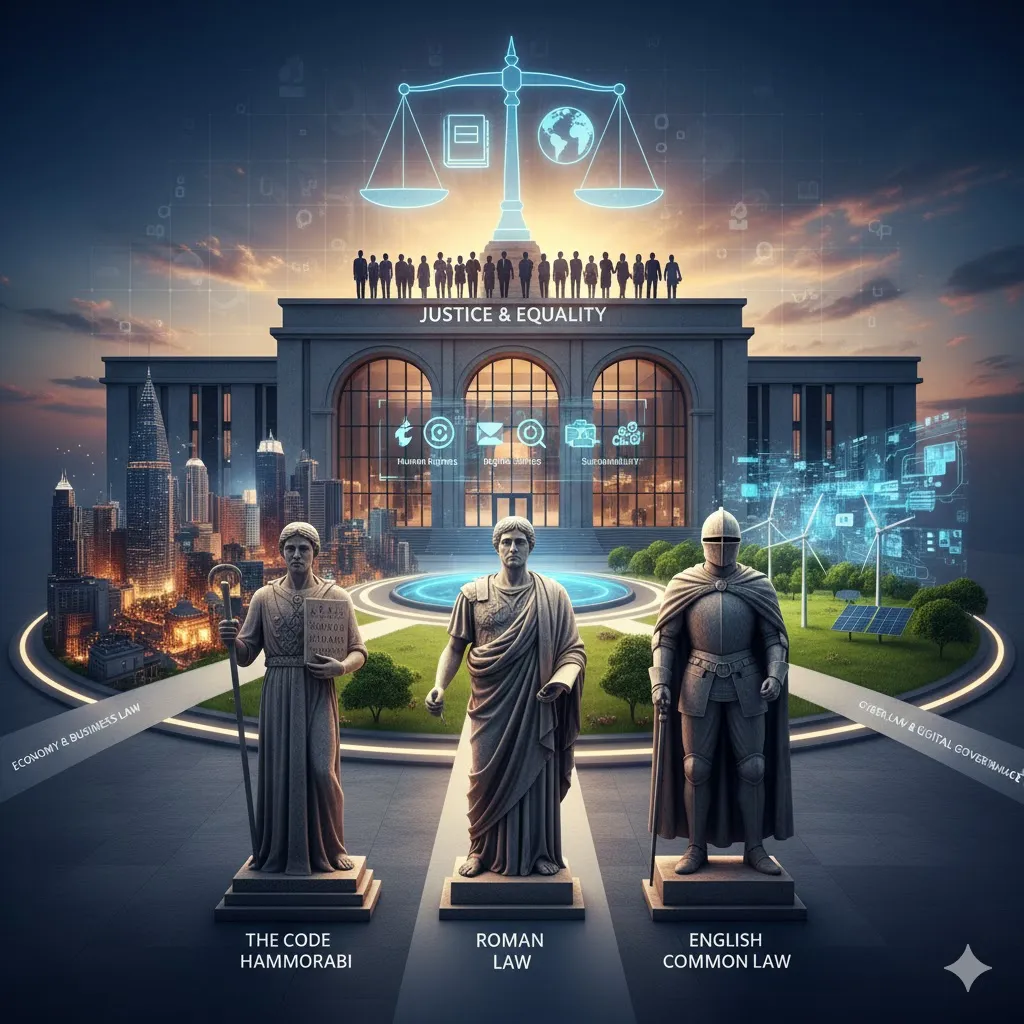Civil Law: Protecting Rights and Resolving Disputes in a Modern Society
Introduction
The law is not only about crimes and punishments — it is also about fairness, responsibility, and peaceful coexistence. One of the most important branches of the legal system is civil law, which deals with the rights and obligations between individuals and organizations. Unlike criminal law, which punishes offenders, civil law seeks to resolve disputes and ensure that justice is served in personal and business relationships. Understanding civil law is essential for anyone who values fairness, equality, and social harmony.
1. The Origins and Purpose of Civil Law
A Brief History
Civil law traces its origins to ancient Roman law, particularly the Corpus Juris Civilis, which laid the foundation for many modern legal systems. Over centuries, European nations like France and Germany refined these principles, creating detailed civil codes that influenced global legal traditions.
Purpose of Civil Law
The core purpose of civil law is to regulate relationships between private parties. It provides a framework for resolving disputes without resorting to violence or chaos. It ensures that individuals, companies, and governments act within a system of fairness and accountability.
2. The Key Principles of Civil Law
Civil law operates on a few foundational principles that guide every case and decision.
Main Principles
- Equality before the law – Every person is entitled to the same legal rights and obligations.
- Autonomy of will – Individuals are free to make agreements as long as they do not violate the law.
- Restoration over punishment – The goal is to repair harm, not to punish.
- Legal certainty – People should know what the law expects of them.
These principles ensure that civil justice remains transparent, predictable, and fair.
3. Types of Civil Law Cases
Main Categories
Civil law covers a wide range of disputes that affect daily life. The most common include:
- Contract law – Disputes over agreements between individuals or businesses.
- Property law – Ownership, real estate, and inheritance issues.
- Family law – Marriage, divorce, and child custody.
- Tort law – Compensation for harm caused by negligence or intentional actions.
Everyday Relevance
From renting a house to signing a job contract, civil law is part of everyday life. It provides legal protection for individuals and ensures accountability in social and economic interactions.
4. The Structure of a Civil Case
Stages of a Civil Lawsuit
- Filing a complaint – The plaintiff submits a written claim to the court.
- Response – The defendant answers or contests the claim.
- Pre-trial proceedings – Gathering evidence and exchanging documents.
- Trial – Both sides present their arguments before a judge.
- Judgment – The court decides who is right and what compensation is due.
The Role of Mediation
Before going to court, many disputes are resolved through mediation — a voluntary process where a neutral third party helps both sides reach an agreement. This method saves time, money, and preserves relationships.
5. Contract Law: The Heart of Civil Relations
What Is a Contract?
A contract is a legally binding agreement between two or more parties. It sets out the rights and duties of each side.
Elements of a Valid Contract
- Offer and acceptance – One party offers, the other accepts.
- Consideration – Something of value must be exchanged.
- Intention – The parties must intend to create legal obligations.
- Capacity – All parties must have legal ability to contract.
Contracts form the backbone of modern business and personal transactions, from buying a car to hiring an employee. Without contract law, economic stability would collapse.
6. Family Law and Personal Rights
Family and Social Stability
Family law governs marriage, divorce, child custody, and inheritance. Its purpose is to protect family members and ensure that emotional, financial, and parental responsibilities are respected.
Protecting Vulnerable Groups
In recent years, civil law has expanded to defend the rights of vulnerable individuals — such as children, women, and the elderly. Laws about domestic violence, child support, and guardianship continue to evolve to promote equality and protection.
7. Tort Law: Compensation for Harm
Definition and Purpose
Tort law deals with civil wrongs that cause harm or injury to another person. The main goal is to provide compensation rather than punishment.
Common Examples of Torts
- Negligence – Failing to act with reasonable care (e.g., medical malpractice).
- Defamation – Damaging someone’s reputation through false statements.
- Intentional harm – Assault, trespass, or false imprisonment.
Importance
Through tort law, victims can recover damages for medical costs, emotional distress, or lost income. It ensures accountability and promotes responsible behavior in society.
8. Property Law: Ownership and Rights
Understanding Property Rights
Property law governs the ownership and use of land, houses, and personal belongings. It defines what individuals can and cannot do with their property.
Types of Property
- Real property – Land and buildings.
- Personal property – Movable items like cars or jewelry.
- Intellectual property – Creations of the mind, such as inventions or artworks.
Modern Challenges
In the digital era, issues like data ownership and online intellectual property have become central to civil law debates. Balancing innovation and protection remains a key legal challenge.
9. Civil Law vs. Common Law
Two Global Legal Systems
The world’s legal systems are generally divided into civil law and common law traditions.
- Civil law systems (e.g., France, Japan, Vietnam) rely on written codes and statutes.
- Common law systems (e.g., the U.S., U.K.) depend on judicial precedents — decisions made by judges in previous cases.
How They Differ
While common law emphasizes case interpretation, civil law focuses on codified principles that apply universally. Each system has strengths: civil law provides clarity, while common law allows flexibility and evolution.
10. The Future of Civil Law
Technology and Digital Contracts
With the rise of blockchain and smart contracts, civil law is entering a new era. Digital agreements can automatically execute terms without human intervention — but raise questions about responsibility, privacy, and enforcement.
Environmental and Global Concerns
Modern civil law is also adapting to global issues like climate change, human rights, and cross-border business. International treaties and cooperation are shaping a more unified global legal order.
Toward a Fairer Society
The ultimate goal of civil law is to create balance — between freedom and responsibility, rights and duties, individuals and the state. It remains a powerful instrument for peace, justice, and social progress.
Conclusion
The study of civil law opens a window into how societies function peacefully. It provides mechanisms for resolving conflicts, protecting rights, and ensuring justice without violence. In a world where human relationships and digital interactions grow more complex, civil law continues to adapt — proving that justice is not static but a living, evolving principle. Whether it’s a family dispute or a multimillion-dollar contract, civil law reminds us that fairness is the foundation of civilized life.











